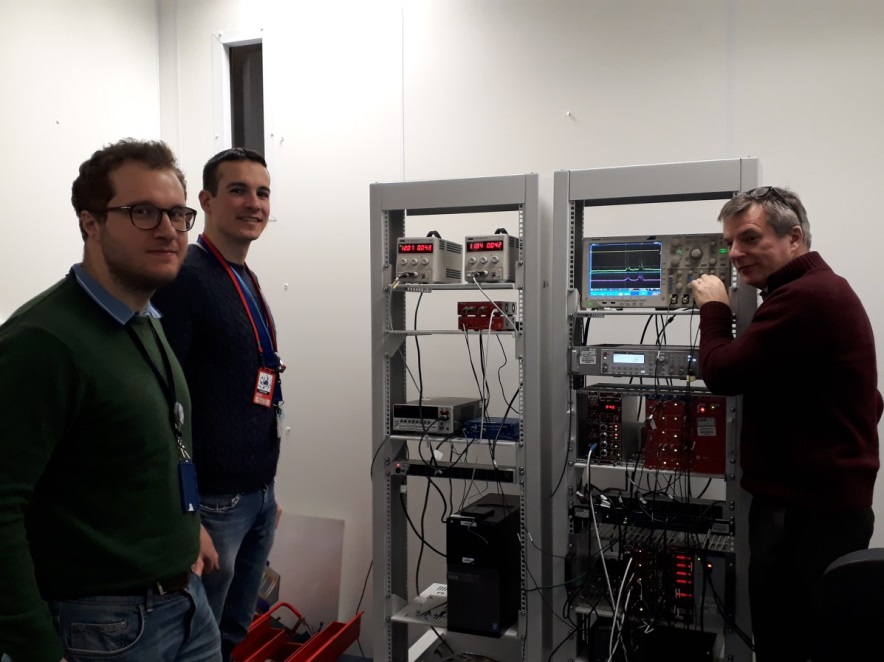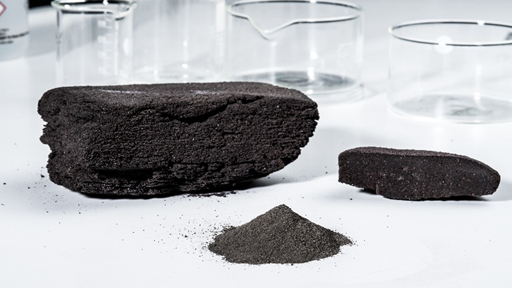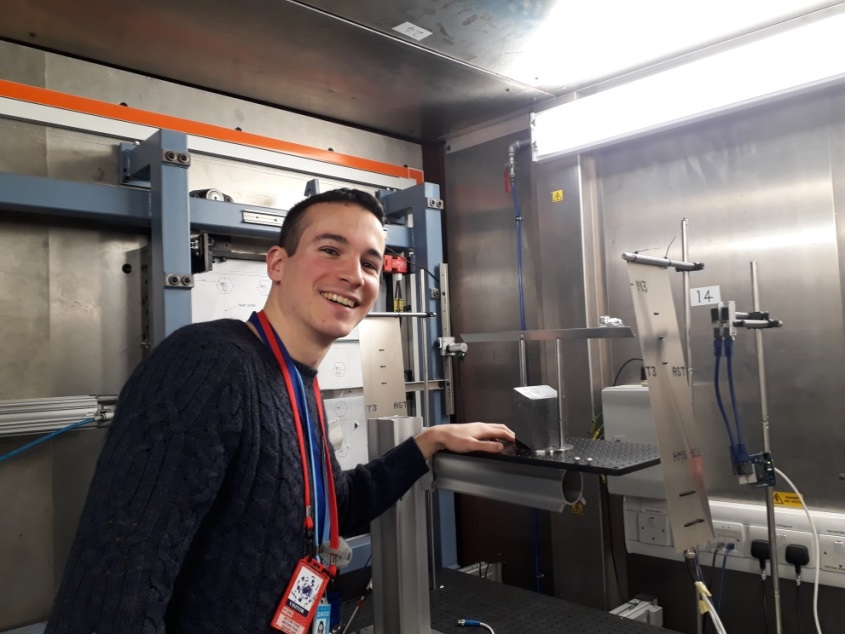This new project, fostered by Harwell Campus links between ISIS Neutron and Muon Source and the ESA-RAL Advanced Manufacturing Laboratory (AML), sees ChipIr – a fast neutron instrument normally used for electronics testing – in unfamiliar territory. Here ChipIr is testing moon soil simulants and their radiation shielding effectiveness for human protection.

From left to right: Dr Carlo Cazzaniga (ISIS Neutron and Muon Source), Alexandre Meurisse (DLR PhD student seconded to ESA-RAL AML) and Dr Chris Frost (ISIS Neutron and Muon Source) in the ChipIr pod.
Establishing a manned Moon base will involve building habitats that will need shielding from meteoroids and space radiation. The practice of harnessing local resources for human or robotic exploration – known as in situ resource utilization (ISRU) – is becoming increasingly important, allowing materials found at the exploration site to replace materials otherwise brought from Earth. This process of “living off the land" reduces the costs and risks of exploratory missions.
It has been proposed that lunar regolith (unconsolidated solid material that covers the surface of the moon) could be used as a general construction material on a lunar base. Through processing techniques such as sintering, hot-pressing and liquification, simulants of lunar regolith can be fused together to form solid construction blocks. To improve space application understanding in this field, ESA launched an initiative* to develop a 3D-printing process for sintering lunar soil simulant with the use of concentrated solar energy. This work completed last year has allowed the production of brick-sized model building blocks of a lunar base outer shell, some of which were recently tested on ChipIR.
“Neutrons on the moon are produced by spallation interaction of primary cosmic rays on materials, the same process as on the ISIS neutron source" says ChipIr Instrument Scientist Dr Carlo Cazzaniga. “Therefore ChipIr fast neutrons are representative of cosmic ray neutrons in space."

Example of regolith samples derived from ESA funded GSTP project (3D printing of a model building block for a lunar base outer shell). Image credit: DLR-Cologne.
Using the fast neutrons on ChipIr, Alexandre Meurisse, a PhD student seconded to the ESA-RAL AML from DLR-Cologne, has been investigating the radiation shielding efficiency of different lunar regolith simulants, sintered through different processes. Samples include a simulant developed by NASA composed of basaltic ash and a high glass content, and another developed in Japan from basalts from Mount Fuji, both representing the chemical composition, mineralogy and particle size distribution of regolith on the Moon.

Alexandre Meurisse in ChipIr blockhouse.
Andrew Barnes, manager of the ESA-RAL AML, commented, “ This work is important since limited data is published on the attenuation of neutron particles for 3D printed solar sintered regolith. By using ChipIr we have been able to characterise the radiation shielding properties of the solid sintered blocks and assess the necessary wall thickness required to protect the crew on a lunar base."
Using the existing capabilities and fast neutrons at ISIS Neutron and Muon Source and capitalising on campus partnerships, this has opened up new opportunities and areas of research not originally envisaged for ChipIr.
There is still a long way to go before we establish a manned base on the Moon (although there are plans to begin building a human colony as early as 2030), but this unusual research on ChipIr provides new insights which may help in realising a lunar base.
“One small step for ChipIr, one giant leap for mankind…"
* GSTP (General Support Technology Programme) funded initiative entitled “3D printing of a model building block for a lunar base outer shell."
Further information
For further information about the ESA-RAL AML please see here.
Learn more on our instrument ChipIr.
Browse all our science highlights here.
